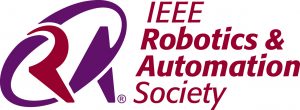Jana Kosecka
Department of Computer Science, George Mason University
Talk Title: Semantic Understanding for Robot Perception
Abstract: Advancements in robotic navigation and fetch and delivery tasks rest to a large extent on robust, efficient and scalable semantic understanding of the surrounding environment. Deep learning fueled rapid progress in computer vision in object category recognition, localization and semantic segmentation, exploiting large amounts of labelled data and using mostly static images. I will talk about challenges and opportunities in tackling these problems in indoors and outdoors environments relevant to robotics applications. These include methods for semantic segmentation and 3D structure recovery using deep convolutional neural networks (CNNs), scalable object instance detection, 3D object pose recovery and learning navigation policies without a prior map. The applicability of the techniques for service robotics and augmented reality will be discussed.
Bio: Jana Kosecka is a Professor at the Department of Computer Science, George Mason University. She obtained her M.S.E. in Electrical Engineering and Computer Science. She was a postdoctoral fellow at the EECS Department at University of California, Berkeley. She is the co-recipient of David Marr’s prize in Computer Vision and received the National Science Foundation CAREER Award. Jana is a former Associate Editor of IEEE Transactions on Robotics. Currently she is a Member of the Editorial Board of International Journal of Computer Vision and Associate Editor of IEEE Transactions on Pattern Analysis and Machine Intelligence. She has over 100 publications in refereed journals and conferences and is a co-author of a monograph titled Invitation to 3D vision: From Images to Geometric Models. Her general research interests are in Computer Vision and Robotics. In particular she is interested ‘seeing’ systems engaged in autonomous tasks, acquisition of static and dynamic models of environments by means of visual sensing, object recognition and human-computer interaction.



